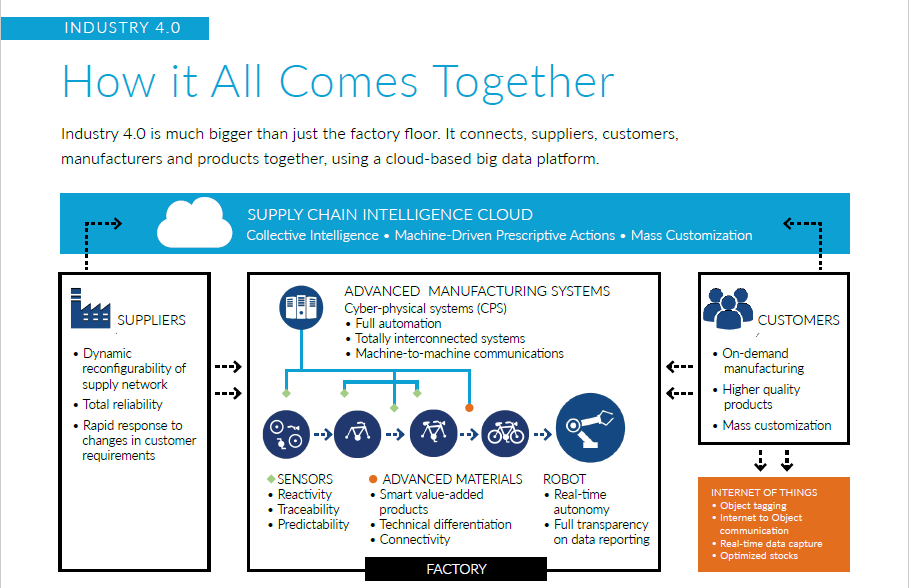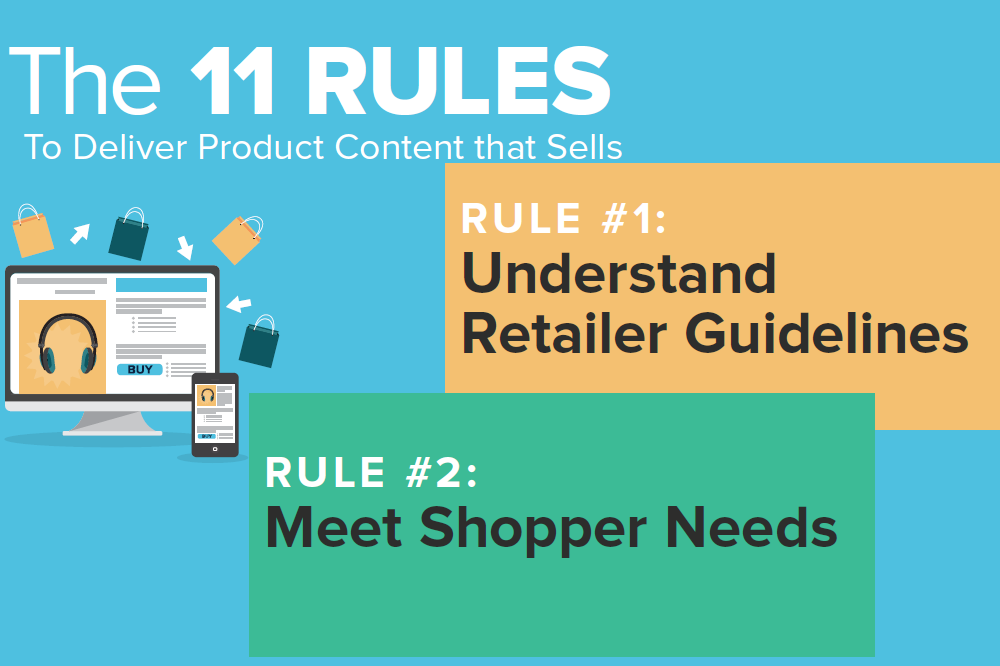What separates a good eBook from a great one?
When asked to compile a list of the best eBooks of 2016, I paused to think about that question. I needed to consider my criteria for ranking these content marketing assets with respect to quality.
Well, I thought, first and foremost they have to look really good. An eBook that lacks great graphical elements or that fails to tell a story visually won’t hold a reader’s attention, especially if text dominates the page.
Then I had to determine the value of the eBook: Does it provide the intended audience with relevant, timely and interesting facts and figures? Does it make an argument that’s hard to beat? Does it convince me that the sky is falling and the only way to stop it is with your product? Yes, yes, and sure, it can – if that’s the purpose of the eBook.
Lastly, and perhaps most importantly, I needed to factor in the campaign that lives around an eBook if it wants to make my best of 2016 list. I had to identify some great assets that acted as capstones to monthly content or as quarterly hubs to monthly spokes. Why? Because eBooks must perform.
And Pawan Deshpande, founder and CEO of Curata, agrees with those qualifying factors.
“Great eBooks are a powerful marketing tool for thought leadership and generating high-quality leads. They need to be in-depth, offer a wealth of actionable advice, tell a compelling story, exhibit strong creative execution with attractive design and layout, encourage user engagement with strong takeaways, and not ‘sell’ to the reader,” Pawan explained when we asked him how to identify the best eBooks of 2016.
“Beyond the eBook itself, the promotion plan for it is also very important, including repurposing its content using a framework such as the Content Marketing Pyramid to get the best ROI from all the work you put into it.”
So without further ado, here are four of the best eBooks of 2016 (in no particular order) that demonstrate techniques all marketers should practice when creating their own eBooks in 2017.
1. FusionOps – Industry 4.0: Are You Ready?
FusionOps, a company that offers a cloud-based supply chain intelligence solution, created an eBook this year that deserves a spot on the list of the best of 2016. This eBook grabs the reader’s attention right away with the title. Only a few words is all it takes to demonstrate the value of FusionOps’ offering immediately. It tells the audience that if you read this piece of content, you’ll know if you’re prepared for the new era of manufacturing.
The eBook begins by explaining the “basics” and why Industry 4.0 is so important, before diving into the nitty-gritty. This gives the reader time to adjust to the topic, become accustomed to the idea of the Internet of Things and prepare him or herself for what’s to come – it’s about setting an expectation and then meeting it.
Meanwhile, the visuals convey an awesome sense of an inter-connected, IoT-run world, and the way that it injects data points into those graphics only reinforces the power and influence of information in the 21st century.
Even better, the graphic on page nine reinforces thought leadership to the maximum degree:

And to top it all off, the promotional part comes late in the eBook (literally the last page). And it’s conveyed almost entirely visually, which is fantastic because there’s no meaningless marketing jargon. You can see how FusionOps’ solution literally fits into the bigger picture of your supply chain.
Check out “Industry 4.0: Are You Ready?” here.
2. Salsify – 11 Rules to Deliver Product Content that Sells
Salsify, a Boston-based software business that’s disrupting retail, has an eBook that really demonstrates the best of the best when it comes to content marketing:
- It provides a wealth of actionable advice in an easily digestible format.
- It’s perfectly targeted at e-commerce change leaders at major brands.
- It’s not promotional – it’s demonstrates thought leadership and establishes the Salsify team’s expertise in the realm of e-commerce.
You read this eBook and say, “Wow! These Salsify guys know what the hell they’re talking about. I trust them. Oh, by the way, what does their product do?” And, then, on the last page, Salsify hits you with the CTA.
On top of all that, the eBook is well-designed, easy to navigate and a pleasure to look at with an expansive color palette.

“This is a highly targeted eBook, free of extraneous information,” Deshpande explained. “It’s clearly and intuitively laid out, with good use of colors to delineate topic categories and simple, effective graphics to illustrate the information.”
And Salsify works the content from this eBook into other blog posts and content, including video, immediately after publishing and months later.
“It includes helpful links to concrete examples of effective e-retail content, and the content follows a logical, easy to follow structure, that will be easily broken into smaller chunks for repurposing into blog posts or infographics,” Deshpande elaborated.
Read “11 Rules to Deliver Product Content that Sells” here.
3. Salesforce – Our Path Together
I know I litera
lly just said that the best eBooks aren’t overtly promotional. Well, this one from Salesforce is pretty much a purely promotional piece of content marketing.
Why is it on my list then?
Well, eBooks serve a lot of purposes. While brand awareness and thought leadership are definitely good reasons to release a data-driven eBook or one chock-full of advice, you can also use them to nurture leads and upsell/cross-sell.
Furthermore, this eBook looks fantastic with its consistent theme. That alone can keep a reader engaged and reading.
Here’s the PDF of “Our Path Together.”
4. ThinkWithGoogle – Fashion Trends 2016
Typically, eBooks contain illustrations, but this one from ThinkWithGoogle uses real-life imagery. Since the eBook is focused on fashion, the design works perfectly.
The key takeaway here is that the type of imagery used in an eBook should align with the subject matter of that asset. That way, all components of an eBook will resonate with the intended audience.
“This is a beautiful eBook thanks to the prominent and extensive use of great photography,” Deshpande pointed out, adding that “the layout and design is first class,” too.
But that’s not the only reason why this makes the list of best eBooks of 2016.
2016’s hottest fashion trends reveal important consumer insights: https://t.co/S5PCc4scVc pic.twitter.com/mnf6z64phm
— Think with Google (@ThinkwithGoogle) August 25, 2016
There’s plenty of insightful data here, and pages are light on copy, making it simple to pull out key information at a glance and less intimidating for readers on a time crunch.
“Given that it’s a Google product, there’s extensive use of data (almost to a fault),” Deshpande stated.
Yes, it’s over 80 pages.
But, as Deshpande explained, “the layout has an intuitive flow, which makes it easy to skim and process the biggest takeaways fast.”
Plus, it’s only that long because ThinkWithGoogle gives readers all the data at the end.
In that regard, the eBook is great for two audiences:
- Those who want a brief look into fashion industry trends.
- Fashion industry pros who demand a deep dive into search trends.
And that’s not all.
“This is an eBook that will lend itself to infographic repurposing extremely well,” Deshpande said.
That feature also helped this eBook make the list of the best of 2016: It will perform – in many different ways – likely for all of 2017. In other words, ThinkWithGoogle thought ahead, and that’s something all marketers should consider when creating larger assets.
Find “Fashion Trends 2016” here.
That’s a wrap for this blog post.
So what’d we learn? If you’re creating an eBook in 2017, ensure it:
- Has a consistent design.
- Tells a story with visuals.
- Provides actionable tips.
- Leverages insightful data.
- Establishes trust with the reader.
- Has a specific goal and/or message.
Special thank you to Pawan Deshpande, the founder and CEO of Curata, a Boston-based company offering content marketing software used by thousands of marketers worldwide. He spearheaded the first-ever panel at SxSW on content marketing in 2011, and was a 2014 finalist for MarketingProfs B2B Marketer of the Year. Pawan was an engineer at Microsoft and Google, where he was awarded patents in social networking and machine learning. He previously attended MIT, where his graduate thesis won top departmental and international awards. Pawan is also a blogger for The Huffington Post, the Content Marketing Institute, CMO.com, Forbes, Marketing Profs, and other technology and marketing publications.





